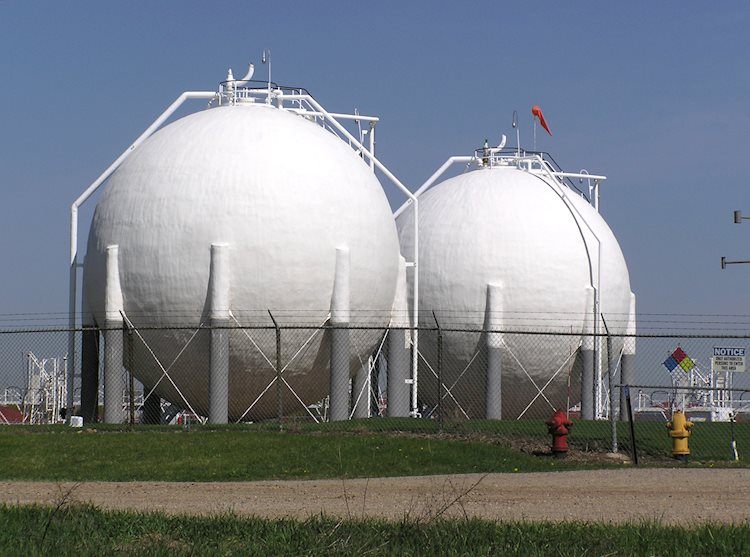- Natural Gas prices fall further as a ceasefire breakthrough in Gaza looks imminent.
- The US Dollar trades in the red again for this week, erasing Wednesday’s gains.
- Natural Gas prices could decline to $2.70 in a worst case scenario.
Natural Gas (XNG/USD) is sinking this week as a ceasefire deal in Gaza means less risk of any supply issues in the Middle East for Crude Oil and Natural Gas. Although the ceasefire got delayed for one day to Friday, markets are still hopeful that the agreement could be the start of a longer-term easing of tensions in the region. Meanwhile, frost is kicking in on the European continent, though Gas storages remain filled up at historically high levels.
Meanwhile, the US Dollar (USD) lost the brief resurgence seen on Wednesday. Throughout the day the Greenback was in good form to turn this week around in its favor. However, the Greenback let loose of its intraday gains near the US closing bell. With the US market closed for Thanksgiving, expect little counterweight in the US trading session, which means that the US Dollar could weaken a touch further.
Natural Gas is trading at $3.02 per MMBtu at the time of writing.
Natural Gas market movers: split drivers
- Malaysian energy group Petronas had to delay several LNG shipments to its customers for December. The cause for the delay comes from production issues at its export facility in Malaysia.
- Recent reports show that flows from Norway to Europe and the UK are above the five-day average, according to Gassco. Overall LNG inflow for Western Europe is in line with the 30-day average.
- Although temperatures in several parts of Europe are starting to head near 0° Celsius, European Gas storages remain at elevated, near-full, levels.
- Several cargo traders are reporting that demand for LNG storage on the water is soaring substantially as European underground storage sites are full.
Natural Gas Technical Analysis: Demand is not there
Natural Gas is playing a dangerous game of chicken on the charts as price action is below the pivotal level at $3.06, which falls in line with the double top from August 8 and 9. Pressure is on the 100-day Simple Moving Average (SMA), which could give way to let prices drop to $2.72 before finding the 200-day SMA as a support.
Although a ceasefire deal comes into play in Gaza, the possibility of an escalation of violence into a proxy war can’t be ruled out. In this scenario, Natural Gas would likely edge up, with $3.20 as the level to watch. Just above, the 55-day SMA at $3.23 could throw a brief spanner in the works. Once bulls have dealt with a break above the 55-day SMA, look for $3.50 as another resistance barrier in the short-term.
The current pivotal level, marked in an orange line near $3.07, is being turned into a cap and should put more pressure on the downside. The 100-day SMA already snapped on Wednesday, though it was able to salvage the situation with a bounce. Once that 100-day SMA breaks at $3, expect pressure to build on the lower-end of that longer-term trend channel, lined up near $2.95. Once broken, it becomes an open road to $2.72 before meeting the 200-day SMA as last support.
XNG/USD (Daily Chart)
Natural Gas FAQs
Supply and demand dynamics are a key factor influencing Natural Gas prices, and are themselves influenced by global economic growth, industrial activity, population growth, production levels, and inventories. The weather impacts Natural Gas prices because more Gas is used during cold winters and hot summers for heating and cooling. Competition from other energy sources impacts prices as consumers may switch to cheaper sources. Geopolitical events are factors as exemplified by the war in Ukraine. Government policies relating to extraction, transportation, and environmental issues also impact prices.
The main economic release influencing Natural Gas prices is the weekly inventory bulletin from the Energy Information Administration (EIA), a US government agency that produces US gas market data. The EIA Gas bulletin usually comes out on Thursday at 14:30 GMT, a day after the EIA publishes its weekly Oil bulletin. Economic data from large consumers of Natural Gas can impact supply and demand, the largest of which include China, Germany and Japan. Natural Gas is primarily priced and traded in US Dollars, thus economic releases impacting the US Dollar are also factors.
The US Dollar is the world’s reserve currency and most commodities, including Natural Gas are priced and traded on international markets in US Dollars. As such, the value of the US Dollar is a factor in the price of Natural Gas, because if the Dollar strengthens it means less Dollars are required to buy the same volume of Gas (the price falls), and vice versa if USD strengthens.

-638363318132743128.png)